Android Central Verdict
The Sonos Beam (Gen 2) is a fantastic soundbar that is an instant upgrade for most home theaters. It has a wider sound stage than you may anticipate, given the device's size, and the quality of sound and depth of the bass is also impressive. However, most of the Dolby Atmos magic is lost in large rooms, as are most quiet moments.
Pros
- +
Compact size
- +
Easy setup
- +
Excellent sound quality with Dolby Atmos
- +
Fantastic wireless connectivity with other Sonos speakers
- +
It can double as a smart speaker
Cons
- -
Large rooms are challenging for the speaker
- -
Trueplay feature locked to iOS
- -
Pricey
- -
You can't have two voice assistants at the same time
Why you can trust Android Central
Sonos has become synonymous with great audio quality in compact packages and is also known for being a bit expensive in its products. With that said, few have used a Sonos product and thought it didn't live up to the price. In the past few years, the company has been working on expanding its product offerings to include products at more price points — enter the Sonos Beam (Gen 2).
Yes, this is the second generation, and it continues the push to provide products at more prices. The new Beam comes in at $50 more than its predecessor and only picks up a few upgrades. So, do the new features make up for the rise in cost? I've spent a few months using the Sonos Beam (Gen 2) in multiple setups to answer that question.
Sonos Beam (Gen 2): Price and availability
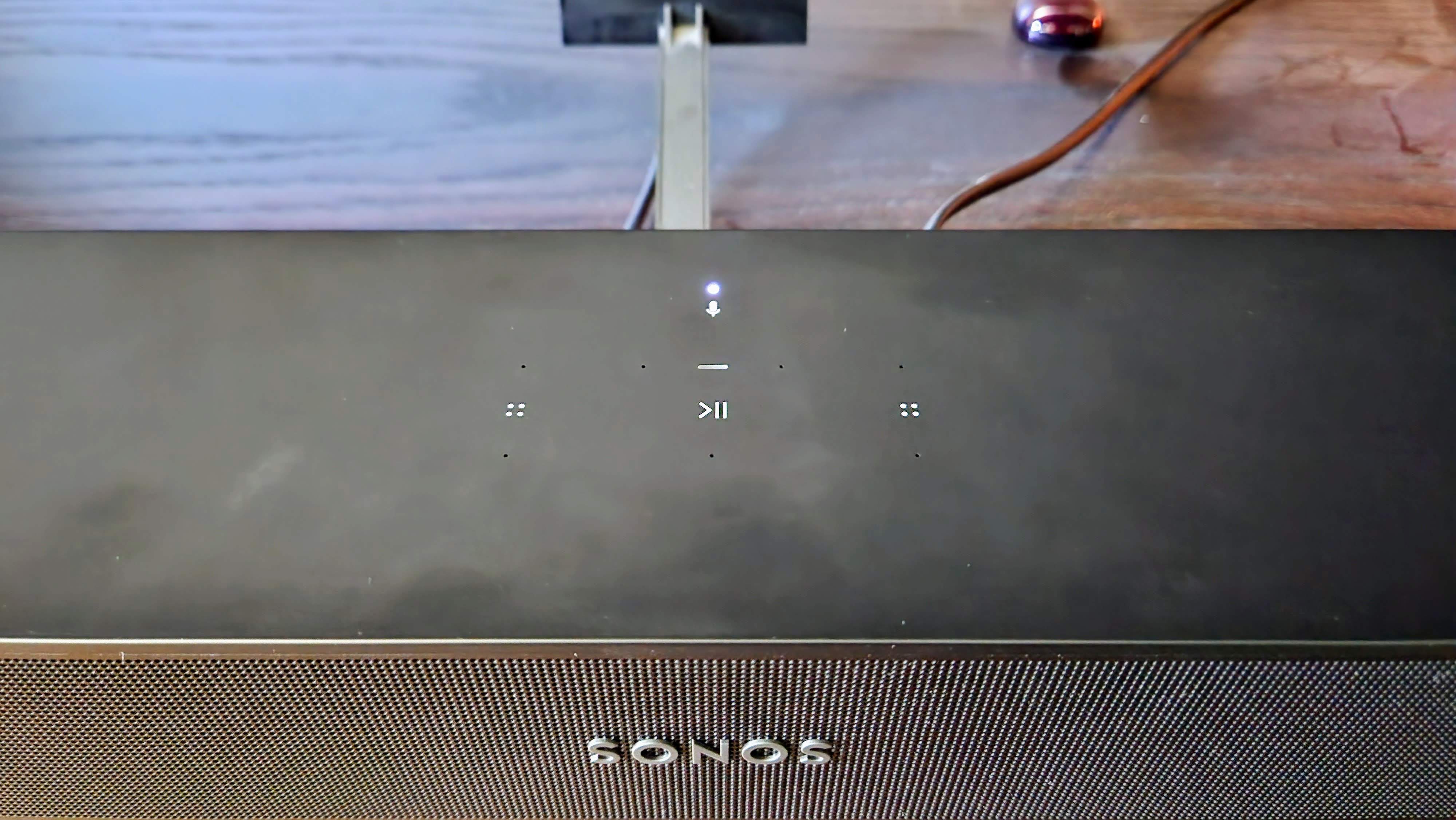
The Sonos Beam (Gen 2) launched in October 2021 at $449. The soundbar comes in two colors — black and white. The availability of the soundbar is broad as it can be found at many retailers such as Amazon, Best Buy, Target, Sonos, and more. The pricing has stayed relatively steady with very few discounts, and as of the publication of this review, the Sonos Beam (Gen 2) is selling for the launch price of $449.
Sonos Beam (Gen 2): What's good
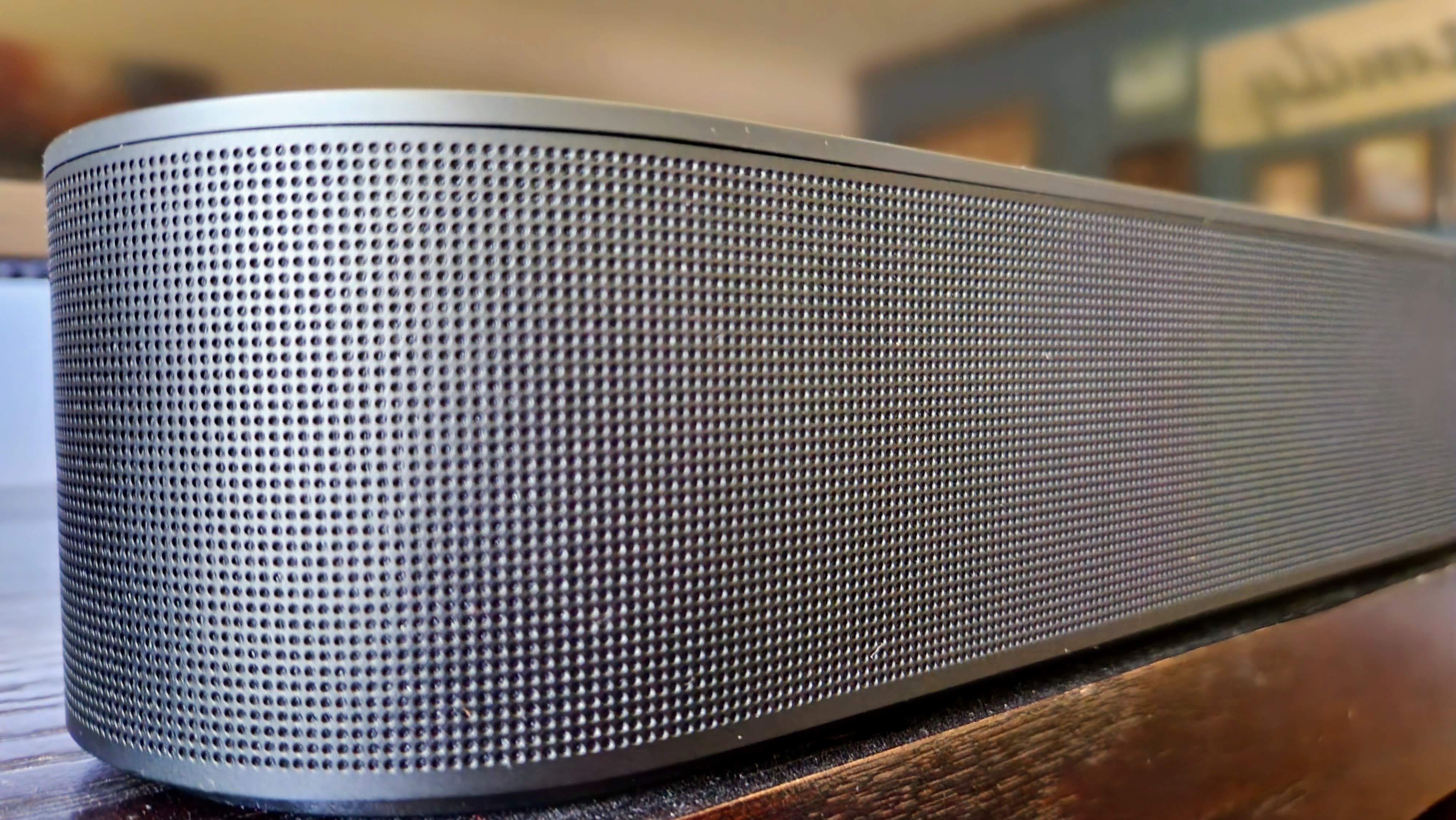
Until I used the Sonos Beam (Gen 2), I had never used a Sonos device. I had heard them at friends' homes but never personally. So, my excitement was high because I knew that Sonos had made some of the best speakers for years, and the original Sonos Beam being so highly-regarded, I couldn't wait to implement it into my home theater setup.
The Sonos Beam (Gen 2) is a very well-built soundbar with even more impressive sound for its size.
Unboxing the Sonos Beam (Gen 2), which I'm going to refer to as the Sonos Beam moving forward, and should I compare it or reference the original, I will denote that it was obvious that it is a very well-built device. There is no creaking in the plastic, no rattling or hollow feeling. The box contains only the speaker, a six-foot power cord, a 4.9-foot HDMI cable, an optical audio adapter, and some paperwork.
On top of the Beam are the same capacitive buttons found on the original soundbar. Around the back are the ports for connecting the power cable, an Ethernet cord, a new eARC HDMI port, and the Sonos Join button. Along with updating the HDMI port for the second-gen Beam, the cloth that served as the speaker grill on the first generation is now plastic.
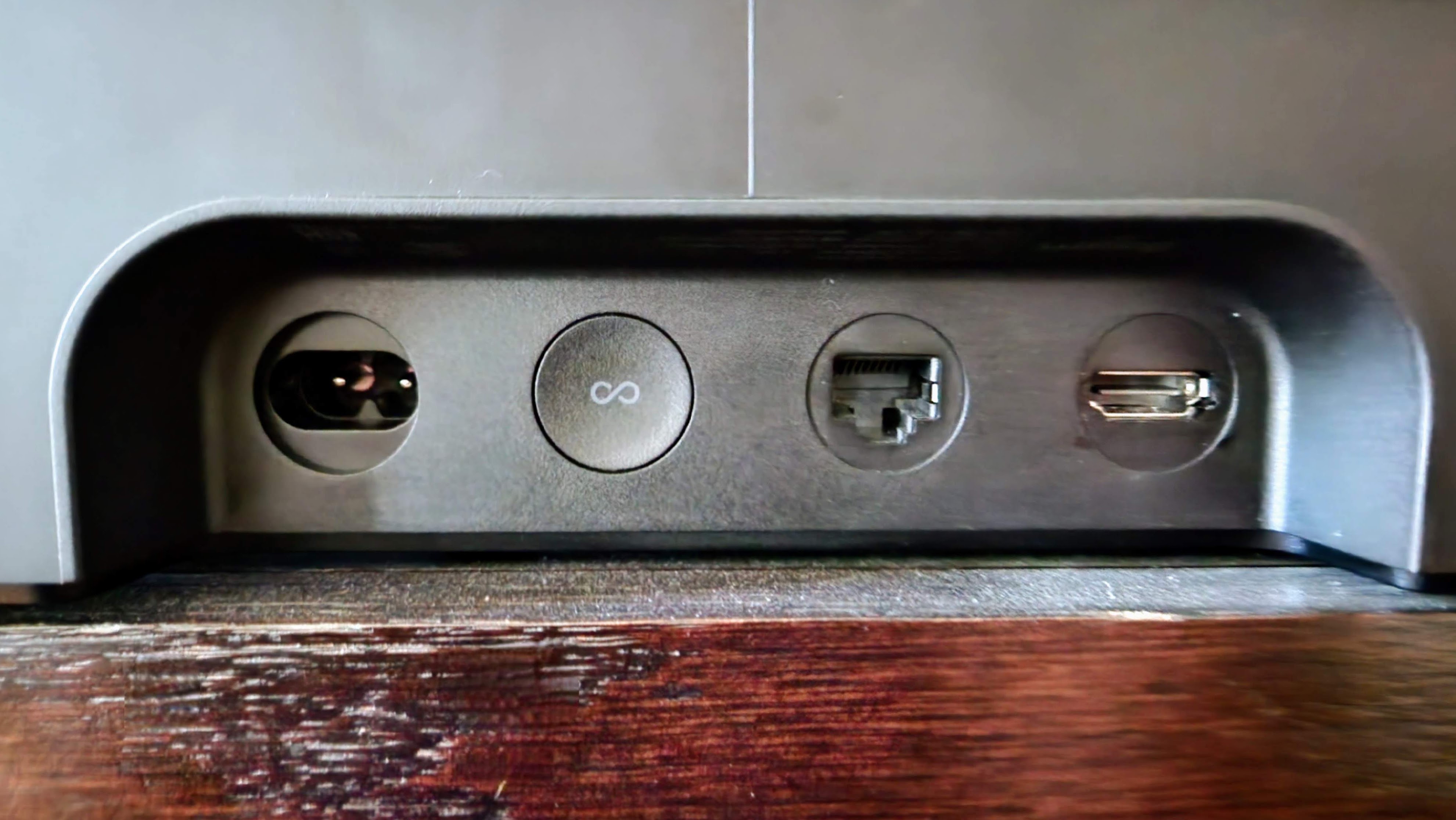
Setup for the Sonos Beam is so easy. Simply download the Sonos app, connect the speaker to your TV using the HDMI cable, plug the speaker into power, and follow the steps in the app. Sonos' app is very clean and does a great job walking through the setup process. Once you connect the app to the speaker, you can adjust it to best fit your room and sound preferences.
Get the latest news from Android Central, your trusted companion in the world of Android
Sonos offers expertly tuned speakers that many prosumers may not appreciate because they enjoy tuning their speakers themselves.
As for those adjustments, there are not many advanced tuning options in the app, as Sonos puts a great deal of effort into ensuring all of its excellent speakers sound great right out of the box. So, if you are someone who likes to tweak every bit of how a speaker sounds — Sonos may not be for you.
What Sonos allows you to adjust are the treble and bass with sliders, loudness with a toggle, the audio's height, and the maximum volume. The Height Audio setting only applies to Dolby Atmos-enabled speakers. According to Sonos, "Dolby Atmos provides two height audio channels that provide sound above the listening area to expand the sound stage beyond the horizontal plane."

The app also lets you connect your Sonos Beam to music providers and voice assistants outside the Sonos-branded options. In June 2022, the company launched its own voice assistant, Sonos Voice Control. In using the voice assistant, I was very impressed with the processing speed and accuracy of what it hears. I've used the best Google Assistant and Alexa speakers, and Sonos Voice Control is by far the fastest in its response.
While the Sonos Voice Control won't be controlling your smart home, it does do a great job of answering basic questions and controlling all of your Sonos devices. If you want more of a complete voice assistant to manage music and your smart home, then you'll want to add Google Assistant or Amazon Alexa.
| Header Cell - Column 0 | Sonos Beam (Gen 2) |
|---|---|
| Dimensions | 25.6 x 2.3 x 3.9 inches |
| Weight | 6.2 pounds |
| Colors | Black, White |
| Connectivity | Wi-Fi 802.11b/g/n/ac, 2.4 and 5 GHz, AirPlay 2 |
| Ports | HDMI eARC, Ethernet |
| Speakers | 4 drivers, 1 tweeter |
| Audio formats | Dolby Atmos, Dolby Digital, Dolby Digital Plus |
| Voice control | Sonos Voice Control, Amazon Alexa, and Google Assistant |
With all of that said, we are talking about a speaker here — how does it sound? Well, pretty great. I was truly impressed the first time I fired up a movie with the way Sonos is able to create virtual surround sound. Not only does the sound seem as though it is coming from all sides, but it is a very full sound.
Even though the Sonos Beam (Gen 2) is using the same speakers as the previous generation, the added functionality thanks to the eARC HDMI port and improved processor, everything sounds just a bit better.
While the original Sonos Beam does a great job of separating sounds to give the impression of surround sound, the addition of Dolby Atmos support in the Gen 2 makes a big difference. This is made possible because of the new eARC HDMI port and a more robust processor in the soundbar.
The bulk of the Gen 2 components are the same as the prior generation Beam, but the new HDMI port and better processor allow for improved sound and new features. Keep in mind that just because the Sonos Beam (Gen 2) supports Dolby Atmos and the movie you are watching offers the feature, if your TV doesn't support the sound profile — you won't get Dolby Atmos.

I anticipated the Sonos Beam to have great mid and high tones, and it did, but what really surprised me aside from the virtual surround sound was the amount of bass the soundbar produces. When watching movies with explosions or the rumbling of a vehicle rolling past, I was met with solid low-range sounds from the Beam.
Now, don't expect the Beam alone to shake your home. But, by complementing the soundbar with a subwoofer like the new Sonos Sub Mini, you can. Then add a couple of Sonos One speakers to improve the surround sound experience even further.
Sonos Beam (Gen 2): What's not good
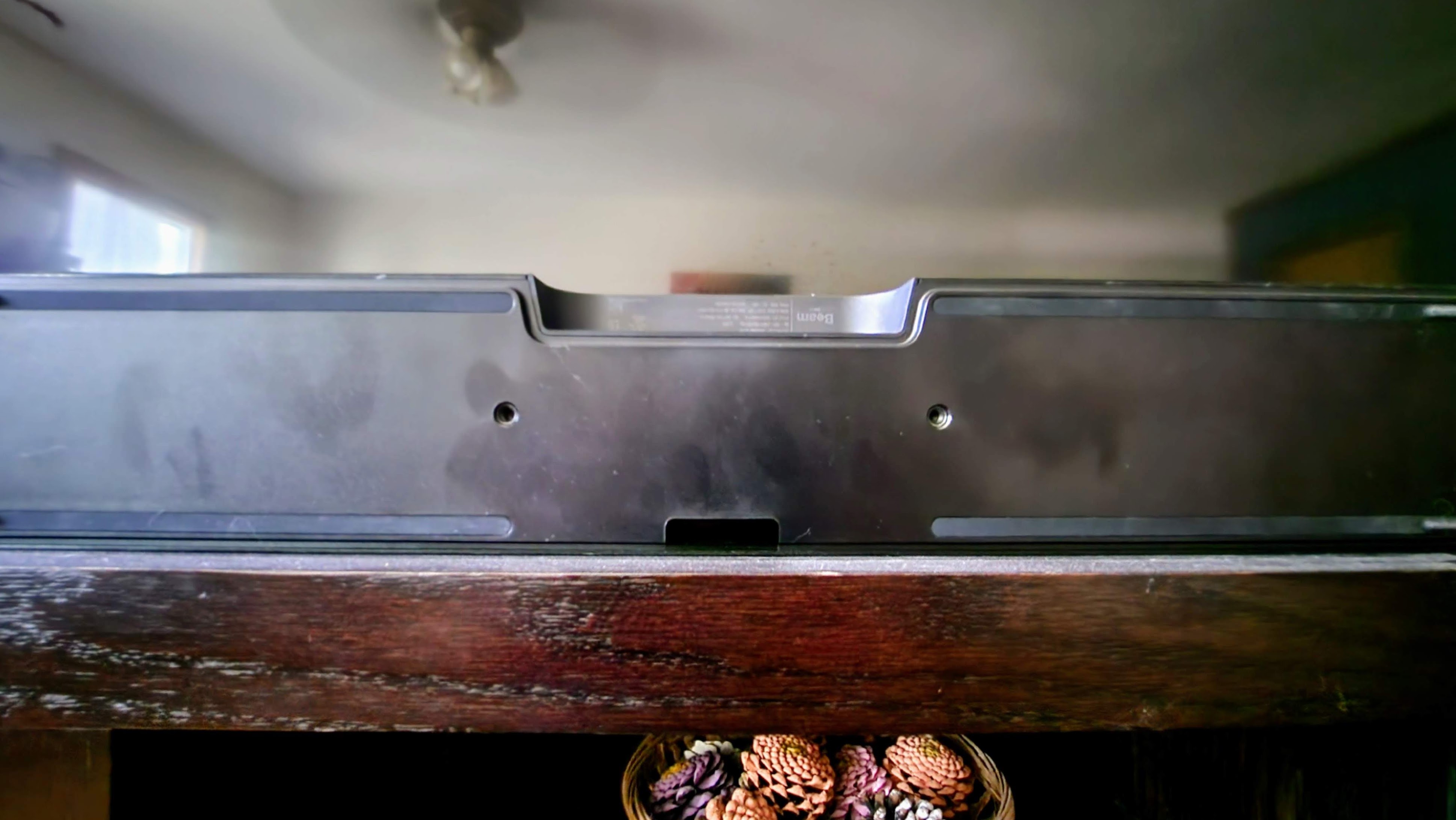
Ok, with so many good things going for the Sonos Beam (Gen 2), could there possibly be anything bad about the soundbar? Well, of course, but the issues are the kind where we say "nothing is perfect" and we look for negatives. Right off the bat, the first thing that most people will point to as a drawback of the soundbar is the price.
The Sonos Beam (Gen 2) has a lot to offer, but it doesn't come cheap.
As with Sonos' other devices, the Beam is priced well above similar devices in the soundbar segment. At $449, it will be a tough pill to swallow for some consumers, considering it is only the soundbar with no satellite speakers or subwoofer. There are plenty of options to get a complete set for the same or less money. They may not offer Dolby Atmos or have the richness of the Beam, but they'll still sound better than your TV's built-in speakers, and you'll have a more complete experience.
For years, I have been using a Vizio soundbar with two satellite speakers connecting to the wireless subwoofer. Would beat out the Sonos Beam (Gen 2) with its companion speakers, no. But the Vizio system offers a better experience for me in my home because of my living room's shape — which leads to the next issue.

I have a long rectangular living room with average ceiling height and width. The issue the Sonos Beam faces in larger rooms is that it struggles to give the same virtual surround sound experience because of how much space it has to cover. The soundbar alone is far better than if I were to use my Vizio system's soundbar alone. But, that's where utilizing additional speakers to stretch the sound stage provides a better overall audio experience than the Beam can offer on its own in a larger room.
The Sonos Beam does wonderfully in small to medium-sized rooms, but it struggles to fill the room properly in larger spaces.
One trick that Sonos has to adjust and tune its speakers to work best in space is Trueplay. This feature takes advantage of a smartphone's microphones and specific sounds emitted from the speaker to adjust where the sound comes from and at what levels from the soundbar. It's easy to do, and theoretically, you only have to do this once after you set the speaker up. However, the problem is that it's only available for iOS.
Would Trueplay on Android make a significant difference in how the speaker sounds in a larger room, maybe? If the Sonos Beam better knew the size and shape of the room, it might be able to adjust to it and offer a better experience. I mean, that is the goal of Trueplay. But, at some point, the software can only do so much to compensate for physical hardware. Unfortunately, Android users can't find out since the feature isn't available for us.

Finally, it's a bit annoying that you can't have Google Assistant and Sonos Voice Control active simultaneously. I like using the native voice assistant for Sonos-related things, but I still want to use the Beam as a smart speaker to control smart home devices.
At least Sonos does allow users to link the many of the best music streaming services to the speaker at once. So, you can ask Sonos to play audio from Sonos Radio and Spotify or YouTube Music. I don't think this issue takes away from all the positives the Sonos Beam offers, but it is disappointing.
Sonos Beam (Gen 2): Competition
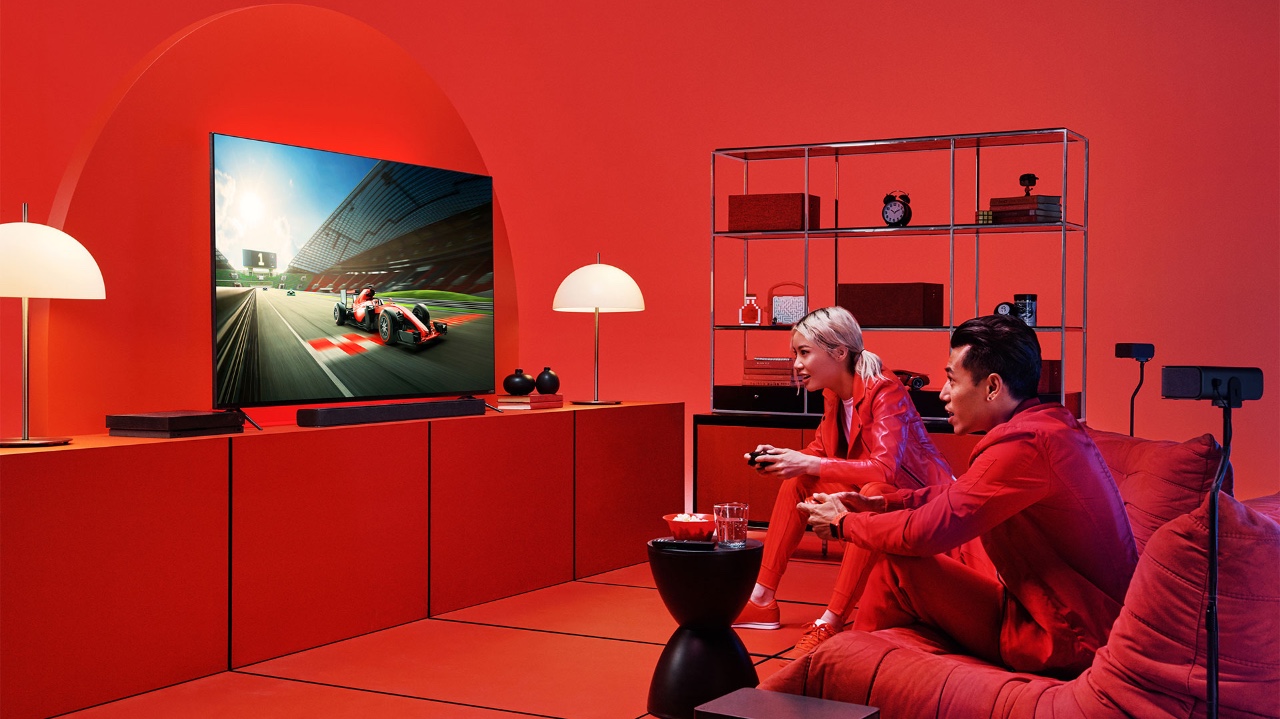
Though Sonos makes some of the best soundbars you can buy today, as I mentioned above, they might not be the best for your room size or budget. If you want a complete surround sound system but don't want to spend more than $500, something like the VIZIO M51ax-J6 as part of the M-Series for $328 on Amazon might do the trick.
The VIZIO M51ax-J6 offers a 5.1 sound system from the soundbar, two satellite speakers, and a subwoofer for an immersive sound stage. It supports Dolby Atmos from the eARC HDMI port to level up your movie-watching experience. It even works with Google Assistant and Amazon Alexa so that you can stream your favorite audio through your home theater system. But you won't get the same level of audio quality as you would from a complete Sonos system, but if your budget and room size calls for another option, this is one to consider.
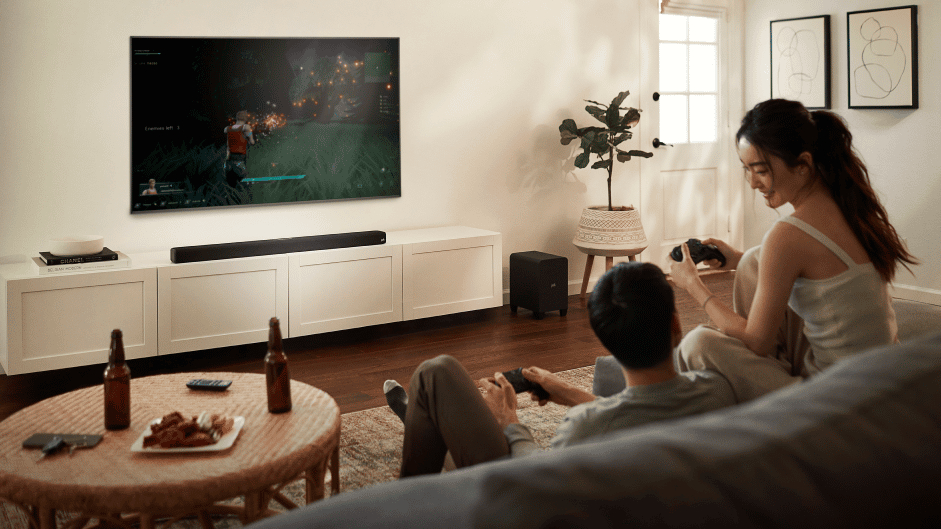
If you are are really on a budget but still want a soundbar that offers Dolby Atmos support and enough bass to rattle the windows, the Polk Audio Signa S4 is worth a look. It has a 7-speaker soundbar with True 3D Surround Sound and Dolby Atmos. Taking it a step further, it also comes with a subwoofer to better fill your entertainment space with bass.
Polk has a few software tricks in its speaker to enhance the experience with its VoiceAdjust feature. It tries to ensure that vocals are enhanced so you can clearly understand what is being said. Sonos offers a similar feature, higher-quality speakers drivers, voice assistant integration, and wireless connectivity to stream music. But, depending on your budget, at $349, the Signa S4 could be a better fit for you.
Sonos Beam (Gen 2): Should you buy it?

You should buy this if...
- You are already in the Sonos ecosystem.
- You have a small to medium-sized room.
- You don't want to mess with setting up multiple speakers for surround sound.
- You want to use your soundbar as a smart speaker.
You shouldn't buy this if...
- You want to tune your speaker manually.
- You want a cheap soundbar.
- You plan on using it in a large room and don't want to buy extra speakers.
The Sonos Beam (Gen 2) is a fantastic choice for most people looking for a premium soundbar. It won't come cheap, but it is a case of you getting what you pay for. The Sonos Beam (Gen 2) produces accurate and warm sounds with an impressive amount of bass for a soundbar. The addition of the eARC HDMI port brings support for Dolby Atmos, which was missing from the first Beam. Then add in the improved processor, and the overall surround sound experience gets elevated further.
But for those who enjoy tweaking every bit of how a speaker sounds, the Sonos Beam won't be for you. Because of the limited set of adjustments allowed, you are left with trusting the Sonos sound engineers for the most part. Then there is the issue of room size. Putting the Sonos Beam into a large room will negate much of the impressive virtual surround sound features. So, keep in mind that if you have such a situation, you will likely want to spring for additional Sonos speakers if you don't already have them.
Let me be clear. It doesn't sound bad in a large room. If you are trying to get into the Sonos ecosystem, need a soundbar, and it's in your budget, then get it. Then down the line, add more Sonos speakers to fill the gaps. Ultimately, the Sonos Beam (Gen 2) is a very impressive soundbar that will sound fantastic in most rooms and will likely surprise you at how great it sounds.
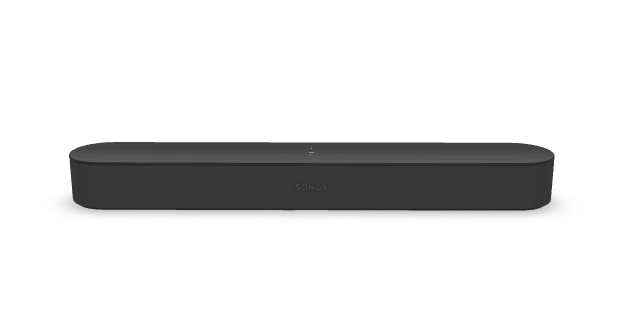
The new Sonos Beam (Gen 2) offers impressive surround sound from a soundbar. Because the new model supports Dolby Atmos, you'll get immersive sound no matter where you put it. However, if that is in a large room, you may lose some of the effect.



